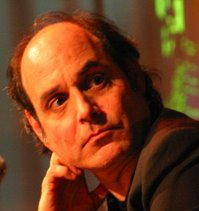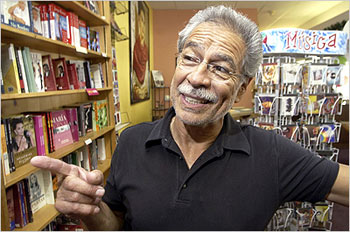 Critically Engaging the Issue of Immigration
Critically Engaging the Issue of ImmigrationLesson plan by Carmen Guzman-Martinez, M.A., Doctoral student
Division of Bicultural-Bilingual Studies
October 2007
Various electronic sources documenting the life and work of Cecilia Muñoz:
http://www.findarticles.com/p/articles/mi_m0DXK/is_10_17/ai_63817007
http://gale.cengage.com/free_resources/chh/bio/munoz_c.htm
“Cecilia Muñoz was born in Detroit, Michigan on July 27, 1962. Her parents came to the U.S. from La Paz, Bolivia. As an undergraduate student she attended the University of Michigan-Ann Arbor. As a graduate student she attended the University of California-Berkeley. Currently, she is the vice president of the office of research, advocacy, and legislation at the National Council of La Raza. Munoz, 37, is a leader in immigration and civil rights policy and is a major force in such issues as the legalization of undocumented immigrants, family-based immigration rights, and access to welfare benefits and education. Her accomplishments include working as the head of Legalization Outreach Programs (Catholic Charities) in Chicago in 1996, Muñoz assisted 5,000 immigrants obtain U.S. citizenship. In this organization, she continues to work as an advocate and activist against discrimination, inhumane welfare reform for immigrants, and inhumane immigration policy. Muñoz has also spoken against anti-immigration groups.”
http://www.macfound.org/:
“The MacArthur Fellows Program awards unrestricted fellowships to talented individuals who have shown extraordinary originality and dedication in their creative pursuits and a marked capacity for self- direction. There are three criteria for selection of Fellows: exceptional creativity, promise for important future advances based on a track record of significant accomplishment, and potential for the fellowship to facilitate subsequent creative work. The MacArthur Fellows Program is intended to encourage people of outstanding talent to pursue their own creative, intellectual, and professional inclinations. In keeping with this purpose, the Foundation awards fellowships directly to individuals rather than through institutions. Recipients may be writers, scientists, artists, social scientists, humanists, teachers, entrepreneurs, or those in other fields, with or without institutional affiliations. They may use their fellowship to advance their expertise, engage in bold new work, or, if they wish, to change fields or alter the direction of their careers.”
Lesson Plan Title
Critically Engaging the Issue of Immigration
Learning Level
Grade level 11-12
TEKS Standards
113.32 United States History Studies Since Reconstruction (One Credit):
(24) Social studies skills: The student applies critical thinking skills to organize and use information acquired from a variety of sources including electronic technology. The student is expected to: (G) support a point of view on a social studies issue or event.
Pre-Instruction or Prerequisite Knowledge/Skills
Basic Internet search capabilities
Basic writing skills
Understanding of what a state representative is and does
Lesson Duration
5 sessions, 1-2 hours each
Learning Location
Computer Lab, online, and in classroom
Materials
· Local newspaper
· Stamps (2 per student)
· Computers with Internet connection and printer/paper
Learning Objectives
· Students will learn about Cecilia Muñoz and her work with the National Council of La Raza.
· Students will support a point of view on the issue of immigration by writing letters to their community’s local newspaper and state representative.
Procedure
1.) Teacher will present a lecture about Cecilia Muñoz.
2.) Students will use the internet to search for information about the National Council of La
Raza:
http://www.nclr.org/
3.) Students will use the internet to search for information about immigration:
http://en.wikipedia.org/wiki/Immigration
3.) Using the attached sheet of questions, students will take notes on the three topics of
Cecilia Muñoz, the National Council of La Raza, and immigration.
4.) Students will use the local or national newspaper to learn how to write letters to the
editor:
http://www.oznet.ksu.edu/NEAreaOffice/lettereditor.htm
http://www.mysanantonio.com/opinion/
5.) Students will work in groups (3-4 students) and discuss opinions on immigration.
6.) Students will take an individual stance on the issue of immigration (for or against).
7.) Students will write a “Letter to the Editor” expressing their stance and mail them.
8.) Students will use the internet to search for their state representative:
http://www.house.state.tx.us/resources/faq.htm#who_rep
9.) Students will learn how to write a letter to his or her state representative:
http://www.chabotcollege.edu/Library/abby/letterstoreps.html
10.) Students will write a letter to their state representative and mail them.






No comments:
Post a Comment